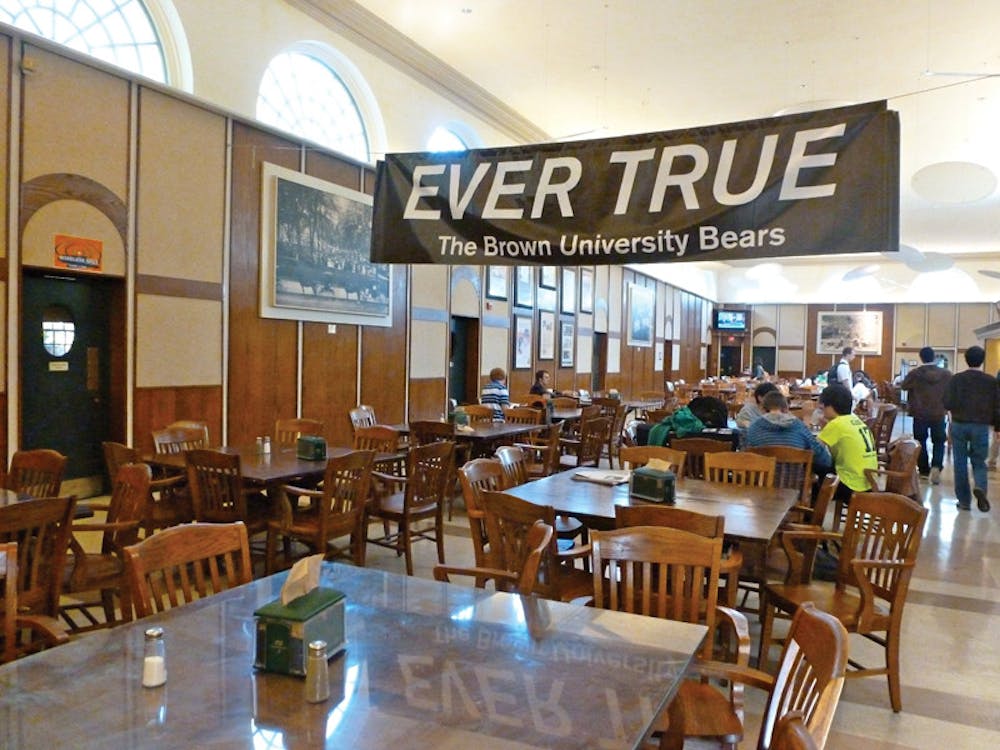The Sharpe Refectory will be renovated in the next few years, pending approval of President Christina Paxson’s strategic plan.
Renovations would address the Ratty’s electricity, plumbing, heating and air circulation, while focusing on making the building “more convenient and comfortable for students,” wrote Provost Mark Schlissel P’15 in an email to The Herald. Specific plans for when and how the Ratty will be renovated have yet to be made, Schlissel wrote.
Due to the early stages of planning, administrators said they do not yet know the cost of possible renovations.
If the building did not undergo renovations, its utility systems would face “imminent failure sometime in the near future,” said Senior Associate Dean of Residential Life and Dining Services Richard Bova.
Administrators would “definitely be working with students” in determining how to make the building more student-friendly, said Margaret Klawunn, vice president for campus life and student services. The Office of Campus Life and Student Services is in dialogue with the student-run Residential Council, she added.
Students expressed mixed reactions about the possibility of renovating the Ratty, with some saying the move could divert funds from other important priorities and others saying the building could use an upgrade.
Alex Mechanick ’15, president of Brown for Financial Aid, said construction on the Ratty and other buildings on campus could divert funds from expanding financial aid.
“Financial aid should be one of Brown’s top spending priorities because of the massive impact it has on learning, students’ quality of life and the value of a Brown degree,” Mechanick said. “Expansion in financial aid must take place alongside many other investments, but we should not let other investments exhaust the resources needed to expand financial aid.”
Renovating campus buildings is “part of balancing the needs and requirements of maintaining a 250-year-old university,” Schlissel wrote.
Other students said renovations could add necessary new components to the building. Julia Elia ’17 suggested the University add a “quiet room for doing work” in the building, and others said the dining hall could benefit from greater culinary variety.
Renovations could improve how food is served and prepared in the Ratty, as well as increase the number of culinary options available, Klawunn said.
Bova laid out several options for maintaining a “well-crafted, easily accessible” dining service that could still provide approximately 8,000 meals a day while the Ratty undergoes renovation. Options include keeping the Ratty open while building a new dining hall on a separate site and re-purposing the space the dining hall currently occupies, implementing a phased renovation that would leave the Ratty partially open or revamping the building’s infrastructure without disrupting daily operations.
Administrators have not yet determined how they would accommodate students if the Ratty were out of use during the renovation. But Bova said he did not anticipate any problems in setting up a site for students to eat.
Dining services workers — including students, hourly workers and management staff — would not lose their jobs during a renovation, Bova said, but would instead be “re-purposed to provide some level of service to students.”
“We are not looking at any reductions during this period,” he said.

ADVERTISEMENT




